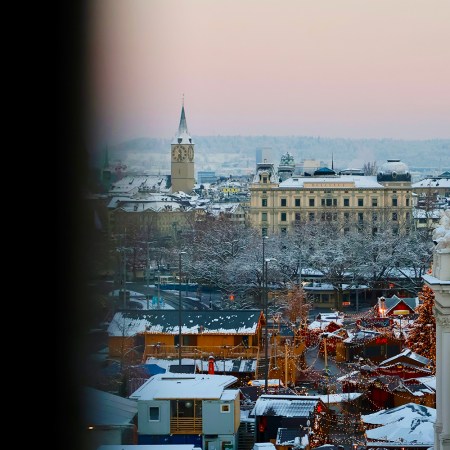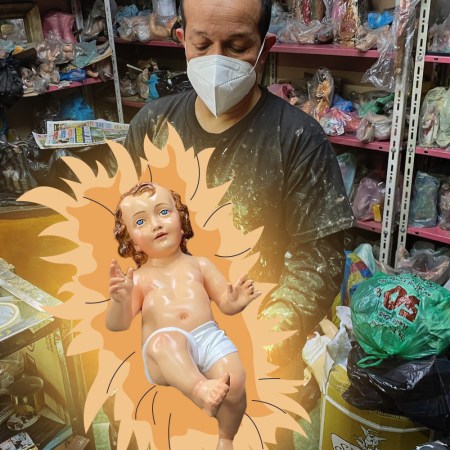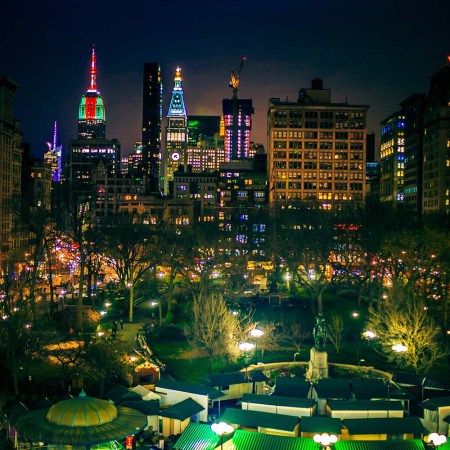It’s increasingly common practice these days to ask if a film “still holds up.”
That question refers to: A) Whether the film is as good (however you define that) as we all remember. Are the jokes still funny? Do the action sequences look cheesy? Are the effects so archaic as to distract your suspension of disbelief?
But also: B) Whether the film’s sensibilities “play” to a modern audience. Is it inclusive and self-aware? Does it stereotype certain people or ethnicities? If Twitter found out you spent Friday night watching it, would you be “canceled”?
More often that not, films that pass tests “A” and “B” are worth keeping around. Which is great. Old movies are inherently educational and unite generations. There is one brand of film, though, whose permanence seems to defy this logic entirely: the animated Christmas special.
Their names and songs are iconic. Frosty, Rudolph, Charlie Brown, the Grinch. ABC airs their specials every year, ensuring they’ll never fade into obscurity, and try as production companies (and now streaming services) might, they’ll never truly be replaced. All of them are shorts that clock in at strange run-times like 43 minutes, about half are stop-motion and according to our most recent appraisal, they’re all super dark.
Not “bad” dark, mind you. Not, “Sheesh, we should probably turn this off, these views are retrograde and embarrassing.” They’re still Christmas specials, after all. But they’re just weird. Most of these shorts feel like the writer’s room was headed up to pitch their storyboard to a network executive, but got stuck in the elevator without food or water for 15 hours, and by the time they finally got out, had deliriously changed major plot-points. These are half-remembered bad dreams, where Santa is often sick or annoyed, monsters and warlocks patrol faux-European villages, and elementary schoolers must stage doomed Christmas productions on paltry budgets. There’s even, as we discuss at length, a fair share of murder.
Below, we’ve done our best to make sense of these dark yet unquestionably classic Christmas specials. We’ve failed miserably, probably, though that might’ve been the point. Do they hold up? Of course they do, in their own macabre, jingling, jangling way.
8. Father Christmas (1991)
This was made by the same folks behind The Snowman, the Raymond Briggs picture book that was turned into an Oscar-nominated animated short film. That tale takes place in a stunning, dialogue-less dreamscape, as a young boy’s snowman comes to life and flies him on an aurora borealis highway over England and Norway to an arctic forest. The short is a well-earned rumination on the fleeting magic of childhood and snowfall.
Father Christmas, meanwhile, is an unnecessary, irreverent, booze-fueled romp through Europe by a swearing Santa who lives in a flat with his house cat in contemporary Britain. Father Christmas decides he needs a long vacation before Christmas, and gets drunk, eats lots of French fries and rubs shoulders with chorus girls everywhere from Paris to Vegas before eventually getting his act together. Before signing off, he wishes viewers a “Happy blooming Christmas,” which was edited out of the American version, along with moments where his plumber’s crack is showing and he nurses a hangover. This film is dark enough to make this list, but ultimately harmless. Father Christmas just needed to unwind a bit. Make sure you watch the British version.
7. Rudolph the Red-Nosed Reindeer (1964)
The director/writer/composer duo of Arthur Rankin Jr. and Jules Bass were the kingmakers of stop-motion animation in the mid-20th century, specializing in spherical figurines, vivid landscapes, and … twisted festive plotlines. Plop a grown, unbiased adult down for a viewing of Rudolph, and it’s unlikely they’ll walk away feeling regaled by a tale of determination in the face of bigoted adversity. If that was the intent, as the song and propaganda around this animation suggests, this film could’ve accomplished it without all of its “bad batch of shrooms” material, which includes side plots involving a 50-foot Yeti called “The Bumble” and his pursuer, an (apparently beddable?) explorer named Yukon Cornelius, plus an island of broken, waddling dolls governed by an unexplained and irascible winged lion. Add that to the premise — a gym coach won’t let the town’s best player on the team because of the color of a body part, and the local autocrat (Santa Claus) only overrules him when some freak weather appears — and there’s a whole host of craziness going on here. Still, nearly every character finds redemption in the end, and sometimes weird is good.
6. The Year Without a Santa Claus (1974)
More Rankin and Bass. Here’s what happens: Santa decides to take the year off because he’s feeling under the weather and doesn’t think people will notice if he doesn’t show up. Mrs. Claus recruits two elves (Jingle, Jangle) to meet with the common people and prove that he’s making a terrible mistake. They get shot off a reindeer after flying directly through a fight between two weather … gods(?) named Heat Miser and Snow Miser, and wind up in a fresh-off-the-’60s American town called “Southtown, USA,” which is inexplicably populated by white people alone, and white people, mind you, who talk like they were reared under a bridge in Coney Island. By some bizarre stretch of events and logic, Santa comes down to this Mississippian town, which is experiencing a day of snowfall. Mother Earth is involved, there are numerous musical numbers, a local dog pound holds tremendous sway over public policy, and Santa sneezes through all of it. This is also one of the rare entries in the Christmas Special canon where Santa just blatantly presents himself to the world. He rides right down Santa Claus Lane at the end, which undermines the timeless Christmas theorem that “seeing isn’t believing.”
5. A Charlie Brown Christmas (1965)
For starters, this is the greatest Christmas special ever, and one of the greatest animated shorts of all time. The Schultz estate has made some questionable decisions in the last couple decades, but this film (along with A Charlie Brown Thanksgiving and It’s the Great Pumpkin, Charlie Brown) is an enduring reminder of what the Peanuts franchise was at the peak of Charles Schultz’s powers: a bitingly funny and depressing universe where children voice the seasonal anxieties of adults and participate in activities simply as a way of marching on with their lives. In Christmas, Charlie Brown and friends struggle to produce an under-budgeted nativity play. The suburb they call home is postmodern, in flux, and replacing things green and hearty with commodities aluminum and shiny. It’s a dark film in that it pokes at the belly of a forlorn society, searches for the navel, and really finds it. You might cry, and that’s okay. Snoopy’s also on his worst (best) behavior in this one.
4. The Little Drummer Boy (1968)
Rankin and Bass by way of Bethlehem. Aside from “pa rum pum pum pum,” the most famous quote from this one is likely “I hate all people,” uttered over and over again by the titular protagonist, Aaron. The story begins with a group of bandits murdering Aaron’s parents, stealing most of their livestock and burning the family farm to the ground. (One of the men kills Aaron’s dad by throwing a knife at his chest. It’s an amazing toss.) Orphan Aaron then absconds to the desert with the remaining animals, where’s he kidnapped into a circus caravan operated by a rotund grifter named Ben Haramed. Rotten Tomatoes’ critical consensus bemoans “the special’s dour storytelling” — and it is a startlingly upsetting way to spend 25 minutes — but TLDB ranks at the middle of the pack because none of the narrative’s violence feels too extraneous or contrived. This is a backwater province of the Roman Empire, during the reign of the mighty Caesar Augustus. Getting your farm burned to ashes was a rite of passage.
3. Santa Claus Is Comin’ to Town (1970)
Absolutely ridiculous. Rankin and Bass’s magnum opus. This tale endeavors to tell the origin story of Santa Claus, through narrator Fred Astaire, who plays an arctic mailman. Basically, a baby named “Claus” is left on the doorstep of an tyrannical mayor’s palace in a sun-less Bavarian village called Sombertown. The mayor (who’s named Burgermeister Meisterburger) orders his British stooge (who’s named Grimsley) to bring the baby to something called an “orphan asylum.” Grimsley ends up leaving him for dead in a mountain range that’s patrolled by an evil warlock, only the kid’s taken care of by the animals, who deliver him to a homeschool in a neighboring valley run by an elf queen and several elf brothers. He learns to make toys there, eventually tries bringing them to Sombertown, has kids sit on his lap and promises to give them toys ONLY if they kiss him (agh!), there’s a toys ban, he meets a teacher who gets a three-minute (?!) psychedelic 1970s sing-along when she thinks Kris (oh, the elf queen named him Kris Kringle, by the way) is being sentenced to death, he escapes with the warlock, who eventually comes to the light, and oh, he also has a penguin friend throughout the entire movie, who somehow made it from the South Pole to the North Pole, and definitely deserved his own animated special. Kris eventually goes to the North Pole with the elves, makes them build a castle for him (and toys, for eternity) while he and his wife get fat. It is beyond comprehension that a room of human beings okay’d this as the origin story for the planet’s most beloved mythical character.
2. Dr. Seuss’s How the Grinch Stole Christmas (1966)
The most dramatic character arc and redemption story here, and Dr. Seuss gets lots of props for pulling it off — the heart “grew three sizes that day” moment is real and wonderful and iconic. But the places we have to collectively go as an audience to reach it are incredibly uncomfortable. The Grinch’s treatment of Max is despicable, his efficiency on the night of the heist is bone-chilling, and his disgust for Christmas (however rectified, by the end) has given Christmas-haters the world-over an anti-hero in the same class as Scrooge.
1. Frosty the Snowman (1969)
Frosty knew what was coming:
Frosty the Snowman
Knew the sun was hot that day
So he said let’s run
And we’ll have some fun
Now before I melt away
This is the only special on this list with a death scene for a beloved character. Yukon Cornelius falls into the pit during his tussle with the Bumble, but survives. At least that “death,” though, would’ve involved some nature of dignity and sacrifice. Frosty is literally murdered by an elementary school magician who had a bad day and lost his hat. He melts slowly, Indiana Jones-style, in front of his best friend, a girl named Karen, after the magician locks them in a greenhouse and cackles outside. Forget that Frosty’s made of Christmas snow. Forget that he comes back to life four minutes later. An eight-year-old watched his face droop down into his shoulders. Imagine the screams? We shouldn’t have to. Especially at this time of year.
This article was featured in the InsideHook newsletter. Sign up now.
























